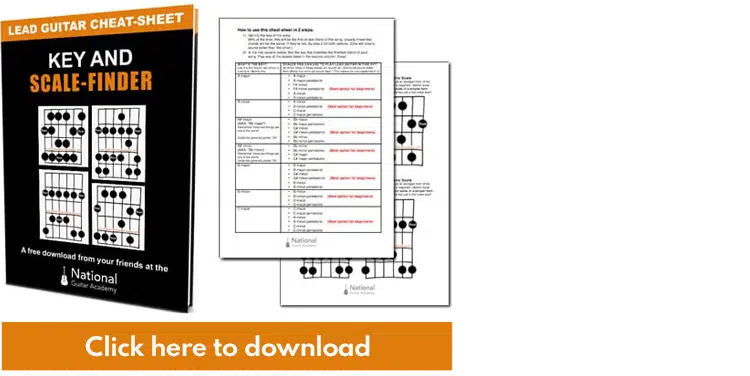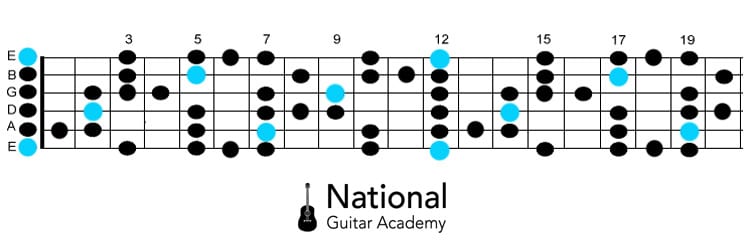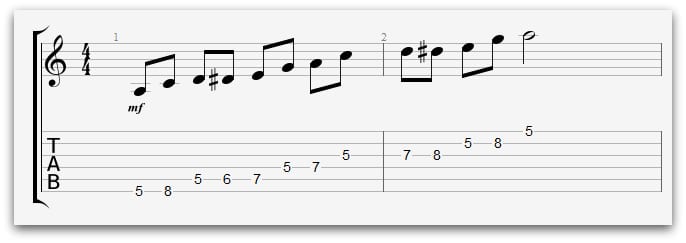Want to learn the blues scale? Then this article will show you everything that you need to know!
In this free lesson you will learn:
- What the blues scale is, complete with notation and tabs!
- Why and when you would use the blues scale.
- 3 awesome blues licks and flicks!
- Blues scale theory which is useful for musicians and guitarists!
Over 100,000 guitar-learners get our world-class guitar tips & tutorials sent straight to their inbox:
Click here to join them Get our best guitar tips & videos
Join over 100,000 guitar learners and subscribe to our guitar-tips-by-email service. (It's free.) We'll send you a series of lessons that will move you to the next level of your guitar journey. Learn how everything fits together quickly, easily and effectively. We share ninja tips (for instant fun!) but also timeless fundamentals that will deepen your understanding. To become a better guitarist click here to see our guitar courses Want us to make a guitar-learning plan that is customised to you? Click here for GuitarMetrics™Want free guitar tips and video lessons delivered to your inbox?


Get our best guitar tips & videos
Our Guitar Courses
Get your personalised guitar-learning plan 🎸
What is the blues scale?
A scale is a group of musical notes which work together. Certain scales work particularly well for certain genres of music.
Blues music has its own dedicated scale.
This is what’s known as ‘the blues scale’.
The blues scale has a fantastic sound and is perfect for those deep soulful riffs and licks!
With that in mind, let’s take a look at this awesome scale.
Learning the blues scale

If you want to know a little bit more about root notes, this article will help you: Guitar Notes Explained: A Guide For Beginners
We’ve provided musical notation and tab for this killer scale.
So whether you’re a guitarist, pianist, clarinet player or even if you play the didgeridoo you should be able to understand this scale!
Here’s what this scale sounds like:
Download our lead guitar cheat-sheet to make things easier
It's hard to understand which scales work with which keys.
So we created a cheat-sheet! A key and scale-finder that you can use again and again.

Get your personalised guitar-learning plan 🎸
Get a custom guitar-learning plan here: Click here for GuitarMetrics™
World-Class Guitar Courses 🌎
Learn from the world's best guitar educators: Click here for our guitar courses
What makes up the blues scale?
The blues scale consists of 6 notes.
Each of these notes has a specific interval.
Those intervals are:
-
The Root (1)
-
Flattened 3rd (b3)
-
Perfect fourth (4)
-
Flattened 5th (b5)
-
Perfect 5th (5)
-
Flattened 7 (b7)
When we play this scale in the key of A those notes are:
-
Root – A
-
Flattened 3rd – C
-
Perfect fourth – D
-
Flattened 5th – D#
-
Perfect 5th – E
-
Flattened 7 – G
So the notes in a A blues are:
A C D D# E G
This theory can seem a little unsettling at times, so if you don’t quite understand what this means, these two articles will clear up a few things!
Blues Notes
In the blues scale, there are particular notes which have a bluesy sound.
Those notes are the flat 5 and the minor 3rd.
If you’re playing this scale on guitar, those notes would be on the –
- 3rd fret of the A string (C – Minor 3rd)
- 1st fret of the D string (D# flattened 5th)
These notes are the notes which sound the bluesiest, so if you’re looking for a quick easy route to sound bluesy! These are the notes that you want to play.
It is possible to learn the blues scale ALL over the fret board, there are hundreds of different ways to play this scale.
Here’s a road map to help you find the blues scale over the neck.

This comes in handy when you want to learn how to play lead guitar.
If you’d like to know more about lead guitar, go here!
The Minor Pentatonic Scale
If you’re looking for a simpler version of the blues scale, you might find that the minor pentatonic is a good solution.
The minor pentatonic is actually the same as the blues scale, except it has one less note.
The blues scale has 6 notes, where as the minor pentatonic scale has 5 notes.
The note which is missing out the minor pentatonic scale is the flat 5 (Aka the blues note!)
Here’s a tab and notation of the scale:
So the notes in a minor pentatonic scale would be:
-
Root (1)
-
Flattened 3rd (b3)
-
Perfect 4th (4)
-
Perfect 5th (5)
-
Minor 7 (b7)
So if we were playing this scale in the key of A, those notes would be:
-
Root – A
-
Flattened 3rd – C
-
Perfect 4th – D
-
Perfect 5th – E
-
Flattened 7th – G
Can you see how this is the same scale, minus the flattened 5th?
If you’d like to know more about the minor pentatonic scale, you can learn about it in more detail here:
Why would I use the blues scale?
The 3 main reasons for using the blues scale are that:
- You want to learn how to improvise.
- You want to write an awesome melody!
- You want to create a cool blues riff.
All of these are valid reasons as to why you’d learn the blues scale.
Learning how to improvise
Improvising is one of the coolest things you can do on guitar.
We like to think of improvisation as the creation of melodic ideas in real time.
Usually if you write a melody or phrase, you spend time crafting it until it’s perfect.
Improvisation doesn’t have that feature.
It’s raw, edgy and a fantastic way to express yourself as a musician.
Here’s a couple of cool tips and tricks you can do get you improvising with the blues scale!
Learn your blues scale
Before you even attempt to improvise with a blues scale, it’s vital that you understand:
- How to play it.
- What it sounds like.
- What it feels like under the fingers.
If you have a clear and concise understanding of these fundamentals, improvising with this scale will be FAR easier.
Too many guitarists, rush into a scale and try and play it as fast as they can. It’s important you slow down, you need to soak up those bluesy notes.







